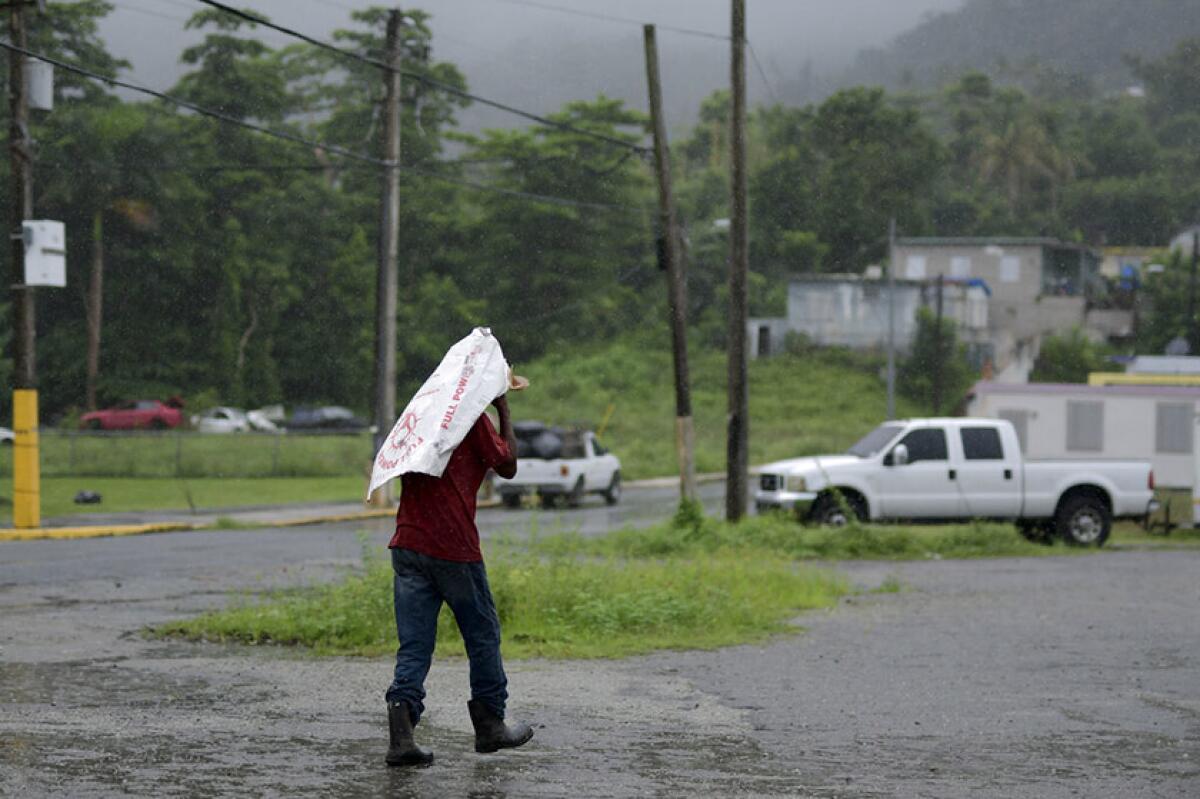Tropical Storm Karen exits Caribbean after causing flooding, power outages

- Share via
SAN JUAN, Puerto Rico — Authorities in Puerto Rico and the U.S. Virgin Islands reported limited power outages, flooding and landslides as Tropical Storm Karen swirled away from the northeast Caribbean early Wednesday.
Some schools and government offices were expected to reopen in the region with the exception of those in St. John in the U.S. Virgin Islands.
Ernesto Morales, a meteorologist with the National Weather Service’s office in San Juan, the Puerto Rican capital, said heavy rains would keep affecting the island’s southern and eastern areas until shortly before dawn Wednesday.
“It’s not the moment to lower your guard,” he warned.
Crews also temporarily closed some coastal roads in southeastern Puerto Rico that became flooded after Karen hit the U.S. territory on Tuesday, leaving up to 29,000 customers without power at one point. An island-wide outage was reported in neighboring St. Thomas on Tuesday morning, followed by smaller outages later that afternoon.
Forecasters warned of more rain showers for Puerto Rico and the U.S. Virgin Islands throughout Wednesday, but those were expected to dissipate by Thursday as Karen headed north. The U.S. National Hurricane Center said the storm was expected to stay well east of the Bahamas, which was hit by Hurricane Dorian on Sept. 1.
Karen was located about 85 miles northeast of San Juan late Tuesday night and was moving north-northeast at 14 mph. Its maximum sustained winds had increased in the afternoon to 45 mph, with some strengthening expected in upcoming days.
Meanwhile, Tropical Storm Jerry was expected to pass near Bermuda on Wednesday morning. It was about 235 miles west-southwest of Bermuda and had sustained winds of 45 mph as it moved north-northeast at 5 mph.
In addition, Tropical Storm Lorenzo was chugging through open waters and was projected to become a major hurricane by the end of the week, although it is not expected to affect the Caribbean. It was centered about 545 miles southwest of the southernmost Cape Verde Islands and had maximum sustained winds of 70 mph. It was heading west-northwest at 16 mph.
More to Read
Sign up for Essential California
The most important California stories and recommendations in your inbox every morning.
You may occasionally receive promotional content from the Los Angeles Times.










